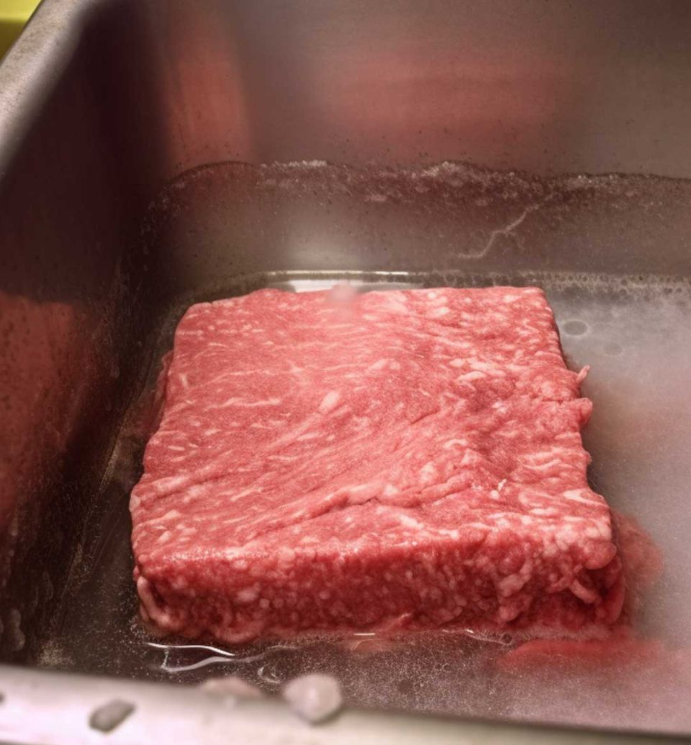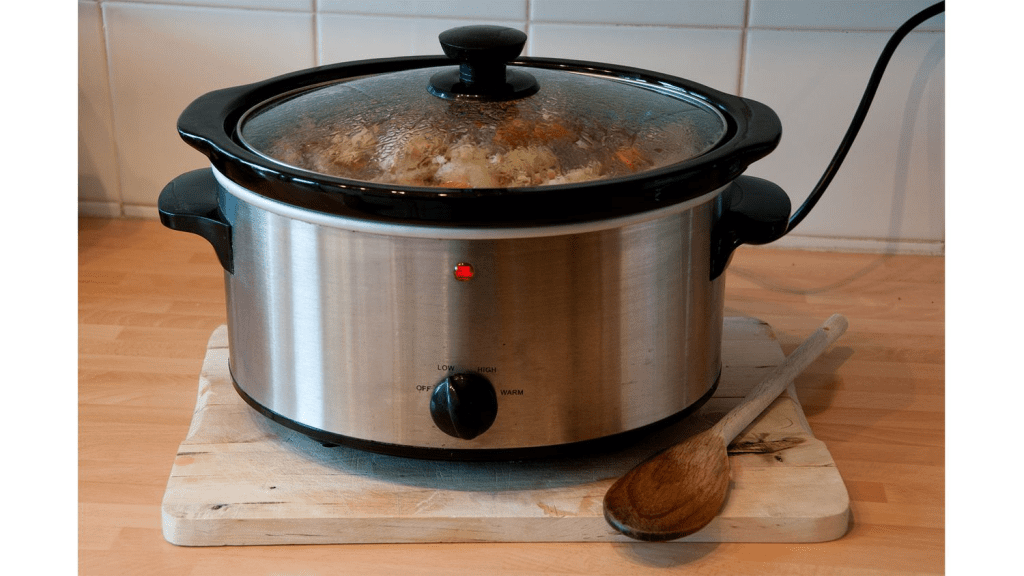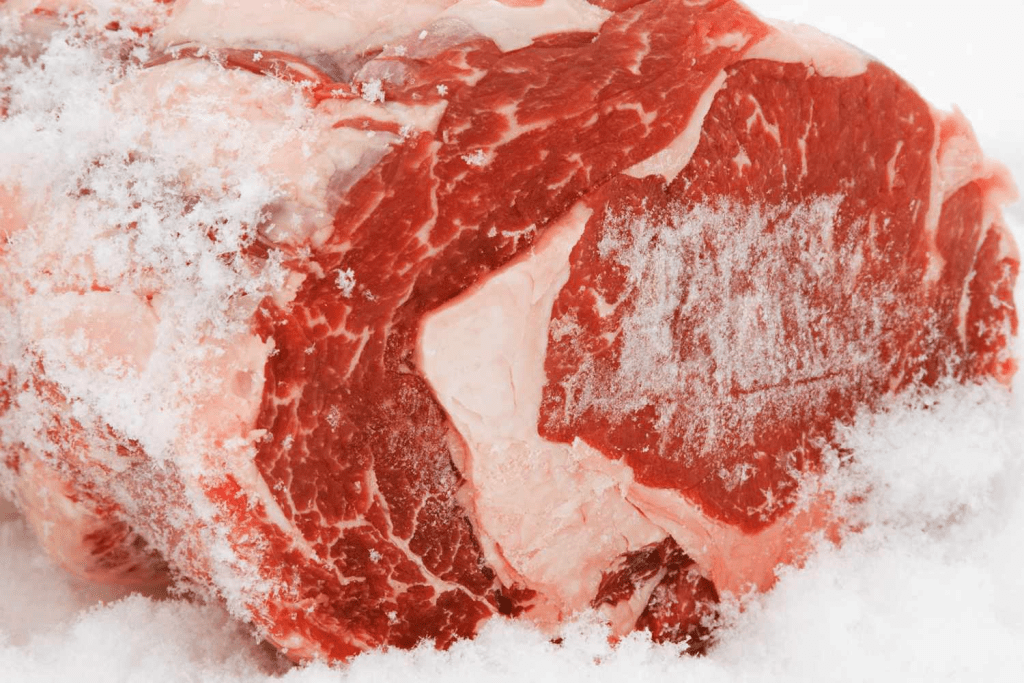The process of defrosting meat is more than just a necessary step in meal preparation—it’s a critical safety concern that can impact the health of your family. While everyone wants a quick and easy way to defrost meat, choosing the wrong method can lead to harmful bacteria growth, spoilage, or even foodborne illness. So, what are the worst ways to defrost meat? Let’s dive into 10 methods you should absolutely avoid.
1. Leaving Meat on the Countertop

Leaving meat on the countertop to defrost at room temperature is one of the most dangerous methods you can use. While it may seem convenient, this method allows bacteria, such as Salmonella and E. coli, to thrive. Room temperature falls within the “danger zone” (40°F – 140°F), where bacteria can multiply rapidly. Even if the meat seems fine, it can still harbor dangerous pathogens, putting you at risk for foodborne illnesses.
2. Defrosting Meat with Hot Water
Using hot water to thaw meat might seem like a quick fix, but it’s anything but safe. The hot water can start to cook the outer layers of the meat, while the inside remains frozen. This leads to uneven thawing and can create an ideal breeding ground for bacteria. Worse yet, the partially cooked outer layer can compromise both the taste and texture of your meat, leaving you with a poor-quality meal.
3. Microwaving Without Caution
The microwave can be your ally for fast defrosting, but only if used with caution. Defrosting meat in the microwave without using the proper setting or keeping a close eye on it can partially cook your meat. This not only affects the flavor but also opens up the possibility for uneven heating, where bacteria can survive in some parts of the meat. Always use the defrost setting and check the meat frequently to prevent it from cooking.
4. Defrosting Meat at Room Temperature
Similar to leaving meat on the countertop, defrosting it anywhere at room temperature is a serious health risk. Some people think it’s safe to defrost meat in the kitchen sink or on a table, but the truth is, this method exposes the meat to unsafe temperature conditions. When meat stays in the danger zone for too long, bacteria can multiply exponentially, increasing the chances of food poisoning.
5. Rinsing Meat with Hot Water
While some might consider rinsing meat with hot water to speed up defrosting, this is a poor choice for multiple reasons. Not only does hot water partially cook the meat, but it also fails to eliminate any bacteria present. In fact, rinsing meat can spread harmful bacteria around your sink and kitchen, leading to cross-contamination. Always avoid this method for defrosting.
6. Defrosting Meat in the Oven
The oven is great for cooking meat but terrible for defrosting it. The uneven heating and exposure to fluctuating temperatures in the oven can cause the outer layers of meat to cook while leaving the inside frozen. This ruins the texture of your meat and, more importantly, creates an environment where bacteria can thrive on the undercooked surfaces.
7. Using the Dishwasher
As strange as it may sound, some people use dishwashers to defrost meat. However, this is not only unsafe but also incredibly unsanitary. Dishwashers are designed to wash dishes, not defrost meat, and the high heat and water exposure can lead to uneven thawing, contamination, and the growth of harmful bacteria. Never attempt to use this unconventional method.
8. Defrosting Meat in a Slow Cooker

Slow cookers are perfect for cooking stews and roasts but are completely unsuitable for defrosting meat. Slow cookers heat food slowly, which means your meat will stay in the danger zone for too long, encouraging bacterial growth. Instead of defrosting, you’re likely to end up with partially thawed and unsafe meat. Always defrost meat before adding it to a slow cooker.
9. Defrosting Meat in the Sun
Leaving meat out in the sun to defrost is unsanitary and incredibly unsafe. The direct exposure to sunlight and warm temperatures can quickly turn your meat into a breeding ground for bacteria. In fact, this method accelerates bacterial growth, putting you and your family at risk for foodborne illnesses. Always keep your meat away from direct sunlight when thawing.
10. Using a Hairdryer

Believe it or not, some people have tried using a hairdryer to thaw meat quickly. While this might seem like a quirky life hack, it’s a recipe for disaster. The inconsistent temperature, airflow, and potential contamination from the hairdryer make it an extremely unsafe method. Plus, the outer layers of the meat may start to cook while the inside remains frozen, resulting in a ruined dish.
Safe Ways to Defrost Meat
Now that we’ve covered what not to do, let’s focus on methods that ensure your meat is thawed safely, without compromising its quality or your health.
Refrigerator Method: The Safest Choice
Defrosting meat in the refrigerator is by far the safest method. It takes longer than other methods, but it ensures that the meat stays at a safe temperature (below 40°F), preventing bacterial growth. Simply place your meat in a dish to catch any liquid drips, and allow it to thaw over the course of 24-48 hours, depending on its size. While it requires planning ahead, it’s the most reliable way to preserve both flavor and safety.
Cold Water Method: A Faster, Safe Alternative

If you’re short on time, the cold water method is a good option. Submerge your meat (in a sealed plastic bag) in cold water and change the water every 30 minutes to keep it at a safe temperature. This method thaws meat faster than the refrigerator but still prevents the meat from entering the danger zone. Small cuts of meat can defrost in a few hours, while larger items like whole chickens may take longer.
Microwave Method: When You’re in a Hurry
If you’re in a rush, the microwave can be an effective tool for defrosting meat, but proceed with caution. Use the defrost setting and monitor the meat frequently to ensure it doesn’t start cooking. The microwave heats unevenly, so you may need to rotate or flip the meat to achieve even thawing. Be prepared to cook the meat immediately after thawing to minimize the risk of bacterial growth.
Conclusion: Defrosting Meat Safely for Better Meals
Defrosting meat is a crucial step in food preparation, but it’s one that requires care and attention. The 10 methods we’ve outlined should be avoided at all costs due to the health risks they pose. By using safe defrosting techniques like the refrigerator, cold water, or microwave methods, you can ensure that your meat is both delicious and safe to eat. Taking a few extra precautions in the kitchen goes a long way in protecting your family from foodborne illnesses while preserving the quality of your meals.


